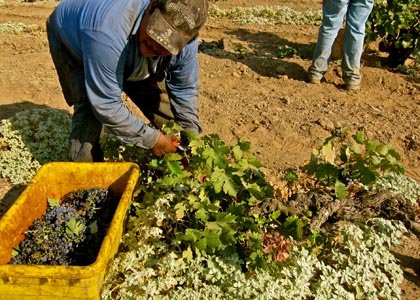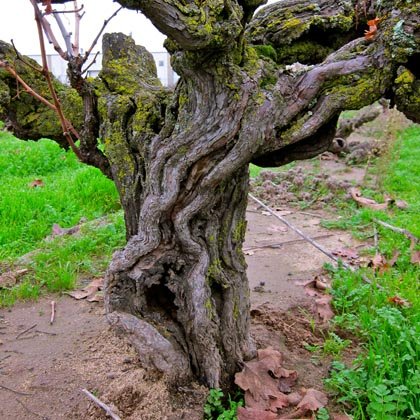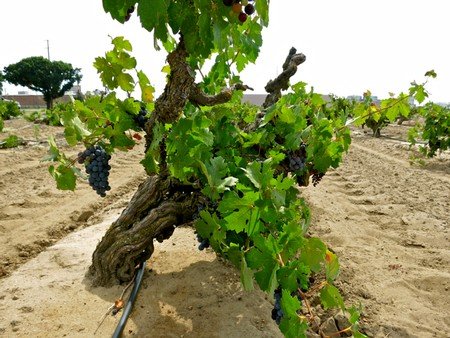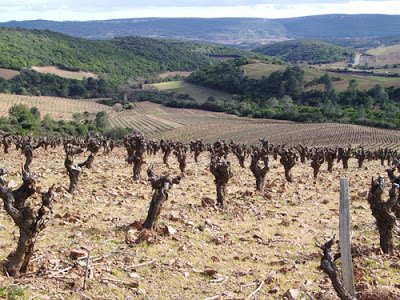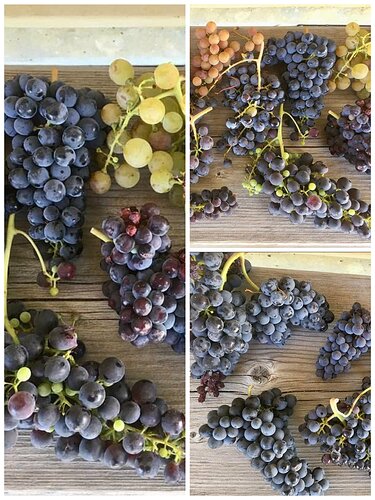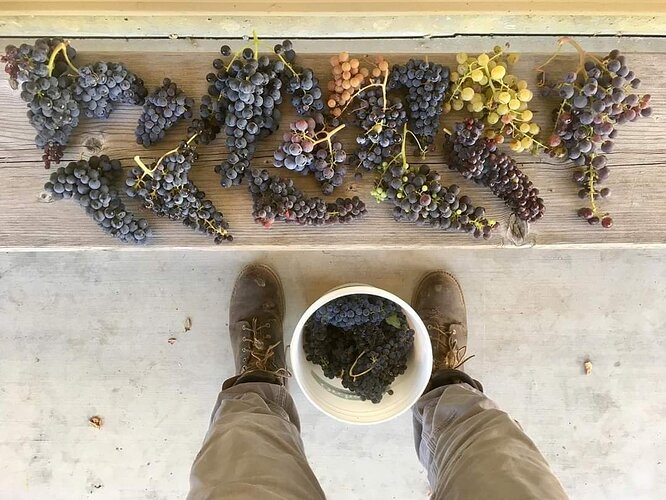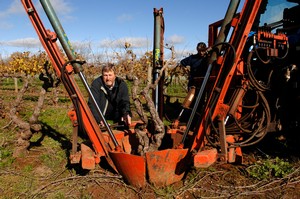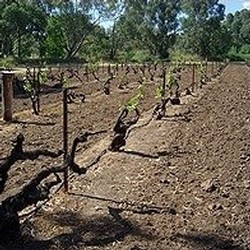I initially was going to post this article on the “Contra Costa Wine Heritage” thread but, just as with the “Santa Clara & San Benito Wine Heritage” thread, I already have explored the factors leading to large-scale vineyard/agricultural land loss to urbanization (in Oakley and San Jose, respectively).
Metroactive Archives: Sonoma Independent
“Inward Bound: Can Urban Growth Boundaries and the ‘New Urbanism’ Stop the Paving Over of Sonoma County? Should They?”
by Zack Stentz
July 11, 1996
"TEN YEARS AGO, the paving over of Sonoma County looked like a fait accompli. Petaluma’s transition from sleepy agricultural town to bedroom community for Marin County and San Francisco neared completion. Almost overnight, Windsor and Rohnert Park had sprung up like tract-home bookends to the north and south of Santa Rosa, which itself was growing rapidly, gobbling up ranch lands and orchards to the east and west. And plans to widen Highway 101 moved full-speed ahead, bringing with them the possibility of a nearly unbroken chain of suburbia from Petaluma to Cloverdale.
"A decade later, the balance of power between the forces of sprawl and preservation is shifting, with the pace of development and annexation slowing, the Highway 101 widening project delayed indefinitely, and the long-deferred dream of building a commuter rail link to Marin finally moving forward.
"But the hottest flashpoint by far for Sonoma County’s development struggles is the issue of urban growth boundaries, or UGBs, legally binding city ordinances preventing municipalities from expanding outward for a set length of time–20 years in most cases. For supporters, UGBs have the advantage of curbing sprawl and helping a community retain its character. Opponents see them as a way to unfairly hinder economic development.
"…‘The problem with UGBs,’ [Mark Green, executive director of Sonoma County Conservation Action] adds, ‘is that if you don’t have them everywhere in the county, then you’re not solving the problem. It’s like squeezing a water balloon. If you limit growth in Santa Rosa but not in Windsor, then that’s where all the growth will go.’
"Which is why the push for UGBs is being waged in nearly every city in Sonoma County at once, a phenomenon [Krista Shaw, the Bay Area Greenbelt Alliance point woman for Sonoma County and a strong backer of UGBs] says is without precedent in the nation. ‘This is the first time in the United States a movement like this has been pushed countywide,’ she says. 'Portland and other cities in Oregon adopted UGBs in 1970, but in that case it was a mandate from the state Legislature, so each of the cities had to come up with one.
"‘We’ve taken that idea, but are doing it from the grassroots up.’
"One such person is Alan Strahan, the man behind the 550-unit Courtside Village development set to take shape this autumn along Sebastopol Road in west Santa Rosa. ‘I support UGBs,’ he says, 'because I think we need to focus our resources on cleaning up the core areas within cities that are rotting instead of always expanding our borders.
"‘You can’t have a healthy county when you keep building subdivisions on agricultural land but leave other areas like Roseland behind to fester.’
"…As advocated by planners and architects like Berkeley’s Peter Calthorpe, who is helping Sonoma and Marin counties come up with a comprehensive land-use and transportation plan, new urbanism involves focusing developments on pedestrian-oriented downtowns instead of auto-centered malls and big-box stores, mixing residential and commercial properties, and encouraging developers to build alternatives to the single-family house with front and back yards and a garage facing the street.
"If this sounds like a throwback to an almost 19th-century model of a compact, public spaceoriented town, that’s because it is. Hence, ‘neo-traditional.’
"Courtside Village in Santa Rosa falls squarely into the neo-traditional category, with its 550 units tucked into 70 acres and centered on a small commercial hub of shops and a community swimming pool. Other amenities include narrow streets, wide, tree-lined sidewalks, and garages in back of the houses.
"‘The houses have porches in front instead of garages,’ Strahan says proudly, ‘which makes it a much more social environment, where you have much more of a sense of community than you get from a street lined with garage doors.’
"So is Strahan trying to encourage community and togetherness among his homebuyers simply out of a sense of altruism? ‘Hell, no!’ he declares. ‘I think these units will ultimately sell better and command better prices than typical suburban houses because many people want that sense of community they feel they’ve lost over the years.’
"Strahan admits, though, that he’s encountered difficulties in selling investors on the neo-traditional concept. 'It’s much more difficult than getting financing for a conventional subdivision, because that’s what banks have financed in the past,’ he explains. ‘It’s like driving by looking through a rear-view mirror.’
"…[Shaw] does admit that things could be worse in Sonoma County. As in some environmentalist-general’s command bunker, a master map of the Bay Area hangs on the wall of her Mendocino Avenue office in downtown Santa Rosa, with the areas most threatened by development highlighted in orange and red. And as one would expect, Sonoma County is marked by a huge crimson swath that cuts up and down along Highway 101 from the north end of Petaluma to the southern outskirts of Cloverdale.
"‘Freeway-based development is the rule in the Bay Area, along the Highway 101 corridor here and all over the place in neighboring Contra Costa County,’ says Shaw, putting the local situation into perspective.
"ONE FACTOR working in Sonoma County’s favor has been the winery explosion of the last two decades. Unlike other regions of the Bay Area, where agriculture is a marginal business at best, the ongoing boom in wine means that, for now at least, many tracts of Sonoma County agricultural lands are more valuable intact as vineyards than carved up into residential subdivisions. ‘Even small tracts of land are viable as vineyards,’ says Shaw.
"But Shaw asserts that a continued winery boom is not a given, and frets over the consequences of a collapse in the county’s wine industry. ‘If and when this boom comes to the end, you’re going to have a lot of landowners in deep financial trouble,’ she says.
"‘And there will be tremendous pressure for them to sell off their land to developers for the quick money.’
"…Green, too, sees Sonoma County as having reached a turning point. ‘Over the next 10 to 15 years, Sonoma County will be making fundamental decisions about what our county will be like for the foreseeable future,’ he says. ‘And if we don’t think carefully about these decisions, then we’ll build out all of the flatlands, agriculture will die on the vine, and we’ll lose that really special quality that makes Sonoma County so appealing to people in the first place.’
"In contrast to Mason’s rust-belt-on-the-Russian-River prediction, Green invokes another specter certain to send a chill down the spine of a Northern Californian. ‘Remember,’ he warns, ‘the Santa Clara Valley used to be a beautiful agricultural region bordering a large urban area. And once upon a time, so was the San Fernando Valley.’…".
I do not live in Sonoma County, nor am I familiar with the specific outcomes immediately linked with the above article.
However, there are a handful of situations posed herein that echo my concerns with the loss of community identity within historic viticultural areas:
· the factors determining whether (and when) Urban Growth Boundaries are necessary in a given point in time;
· the urgency posed by transportation (interstate, railway, etc) route construction plans, devised above city-level concerns;
· the struggle of utilizing “Neo-Tradtional” designs in residential/commercial areas to strengthen/promote sense of community;
· preserving agricultural plots as cultural signposts/marks of community identity;
· implementing grassroots campaigns in city/county-level planning efforts;
· balancing environmental and commercial concerns (!)
I encourage you to read the newspaper article in its entirety, as it’s author painted the complexities of urban growth much more effectively than I could in an attempt to summarize the situation.

